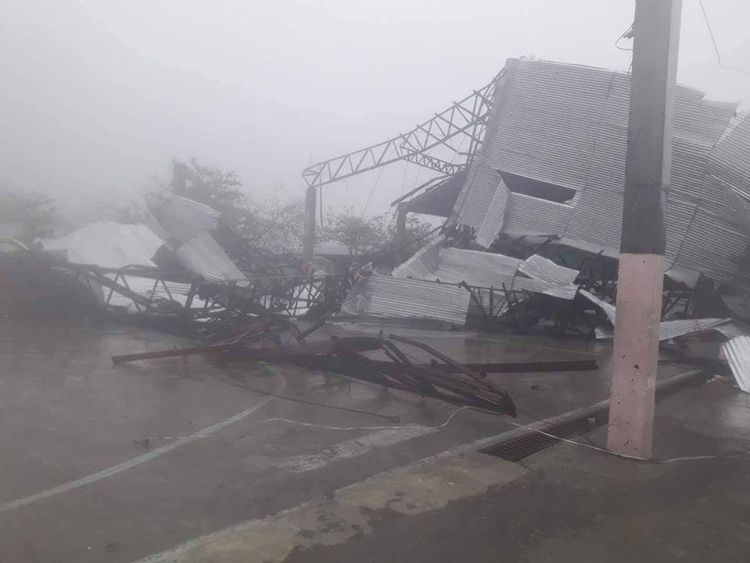We were on the road in northern Luzon when Typhoon Mangkhut hit, at about 1.40am.
It was hard to make anything out in the dark but it was impossible to mistake the force of the storm, the winds that shook and the rains that lashed in equal measure.
Our people carrier shook under the battering; this felt very much the equivalent of a force five hurricane.
As dawn broke the extent of the damage became clearer: it started with palms and branches strewn on the road; we picked our way through them.
Then it was telegraph poles and power lines, eventually streetlights, roofs and other large structures, the destruction intensifying as we moved north.
We were headed for Tuguegarao, the capital of Cagayan – the province thought to be most at risk of damage.
There we met Antonio Abril, who lived out on the outskirts of the city. His entire house had quite literally been knocked sideways by the storm and dumped about six feet from where it had stood the day before.
He had sheltered with his family in a brick house nearby; even that had shook. “It was terrifying,” he said. “It was a horrible day.”
A corrugated metal roof lay nearby: the winds had wrenched it whole from its house 150 metres away.
So it was remarkable that when we caught up with Tuguegarao police, out on patrol, they confirmed there were no casualties in the city or the surrounding county.
We rode with them a while, taking in the town: the traffic lights were out, the mobile phone networks went down, market stalls had been ripped to shreds but there was no heavy damage to buildings.
Fears that Mangkhut could match the scale of Super Typhoon Haiyan, which killed more than 7,000 in 2013, seem unfounded so far.
Part of that is due to planning. Thousands of people in at-risk locations were evacuated. We visited a gym in Tuguegarao. Names of families by location, age and number were diligently noted on whiteboards; sacks of food stood ready for distribution. A hundred people had stayed the night there. Seventy returned home the next day, as the storm began to die down.
One family was staying because the first floor of their home had been completely flooded and they were waiting for the waters to subside: Mary Jane Manzano with her seven-year-old daughter and her new-born baby – only one month and 16 days old.
Mary Jane said she had been scared during the cyclone, as the windows of the big gym hall crashed and water broke through, but that her children had played happily through it all.
It was a relief the storm had not caused more damage; one more night on the mats laid out on the floor, then she and her daughters would return home.
That sense of deliverance is palpable here in Tuguegarao, as the winds and rain slowly ease off, and clearer skies return.
But Mangkhut is not finished. It has weakened but continues its path towards Guandong, in Southern China, and it could regain its Super Typhoon status on the way.
There too they are prepared for the danger, with thousands already evacuated. But it’s a much more densely populated area.
And despite all the successful modelling by forecasters over the world, tropical storms remain unpredictable until the moment they land.
From – SkyNews




